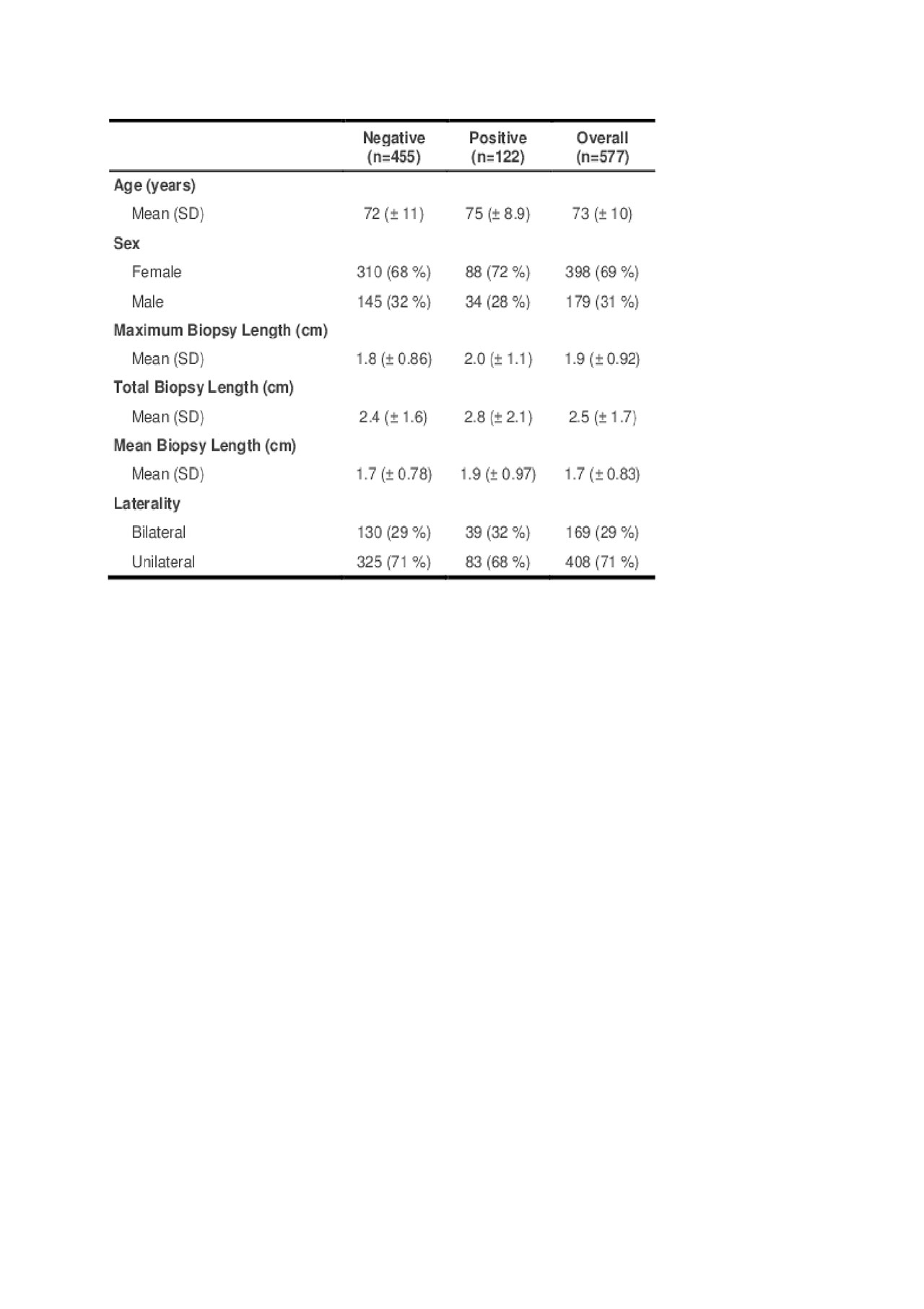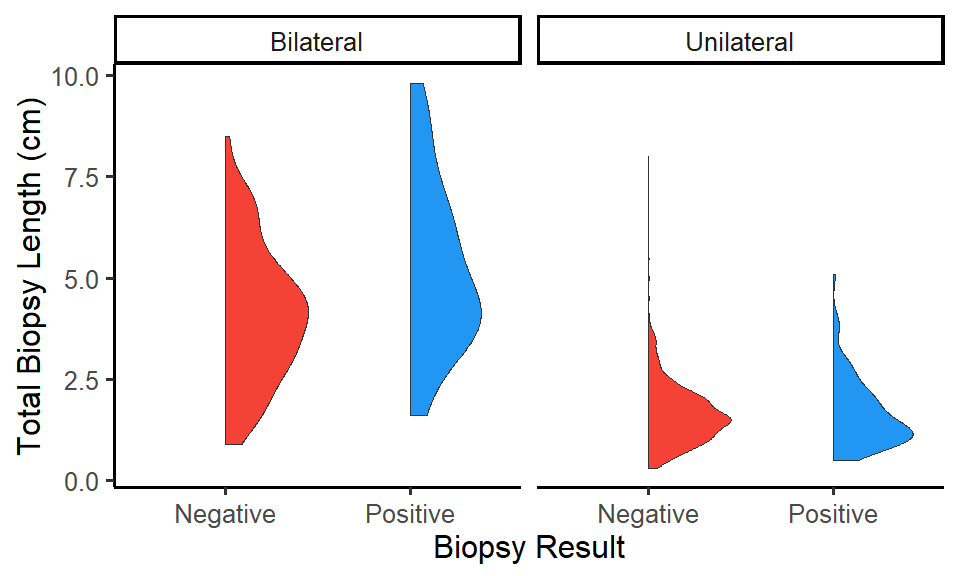Session Information
Date: Tuesday, November 12, 2019
Title: Vasculitis – Non-ANCA-Associated & Related Disorders Poster III: Giant Cell Arteritis
Session Type: Poster Session (Tuesday)
Session Time: 9:00AM-11:00AM
Background/Purpose: Temporal artery biopsy (TAB) is widely recognised as the diagnostic gold standard for GCA, despite having a poor sensitivity due to the presence of ‘skip’ lesions. There is however a lack of consensus guiding TAB practice, particularly in relation to optimal length, need for bilateral specimens and number of segments examined. This study investigated the impact of factors such as total biopsied length, laterality, segment number, and referral center on histopathological outcomes in an Australian setting.
Methods: Reports for all available biopsy specimens labelled “temporal artery” were extracted from the pathology service records of two rheumatology referral centers with adjacent geographic catchments. Each histopathology report was manually reviewed to establish length of biopsied artery, laterality and number of segments, along with patient demographics such as age, sex, and referral center. Key histopathological findings including intimal hyperplasia, disruption of the internal elastic lamina, presence of giant cells and adventitial inflammation were recorded. Multivariable logistic regression with site-varying intercept was performed.
Results: TAB reports from a total of 577 patients were captured, with results available from the two centers from 1999-2019 and 2010-2019 respectively. The mean age in this group was 73, and 69% were female (Table 1). A bilateral TAB was performed in 29%, and the mean total biopsy length was 2.5cm. Of these patients, 122 had positive biopsies (21%), with intimal hyperplasia reported in 100 (17%), giant cells in 83 (14%) and adventitial findings in 68 (12%). Positive biopsy weakly correlated with increased total length of biopsy in centimetres (OR 1.25 [1.06-1.47]) (Figure 1) and increased age in years (OR 1.02 [1.00-1.05]) but not laterality or sex (Table 2). There was a substantial difference between the two centers, which was incompletely accounted for once corrected for total biopsy length and calendar year of biopsy, suggesting either unmeasured differences in patient demographics or a difference in clinical practice. This change was preserved across analysis of different histopathological subtypes.
Conclusion: Total biopsy length was weakly associated with a positive TAB result, but differences in results between referral centers independent of biopsy length suggest other selection factors may be important in determining TAB yield. Examination of differences in results between a greater number of referral centers would assist in determining the extent of this variability.
To cite this abstract in AMA style:
Yang V, Sutu B, McMaster C, Owen C, Strathmore A, Ngian G, Oon S, Leung J, Wicks I, Buchanan R, Liew D. Factors Contributing to Capturing Positive Findings on Temporal Artery Biopsy: An Australian Experience from Two Rheumatology Referral Centers [abstract]. Arthritis Rheumatol. 2019; 71 (suppl 10). https://acrabstracts.org/abstract/factors-contributing-to-capturing-positive-findings-on-temporal-artery-biopsy-an-australian-experience-from-two-rheumatology-referral-centers/. Accessed .« Back to 2019 ACR/ARP Annual Meeting
ACR Meeting Abstracts - https://acrabstracts.org/abstract/factors-contributing-to-capturing-positive-findings-on-temporal-artery-biopsy-an-australian-experience-from-two-rheumatology-referral-centers/



